Photo credit: Claudio Provenzani - GUE
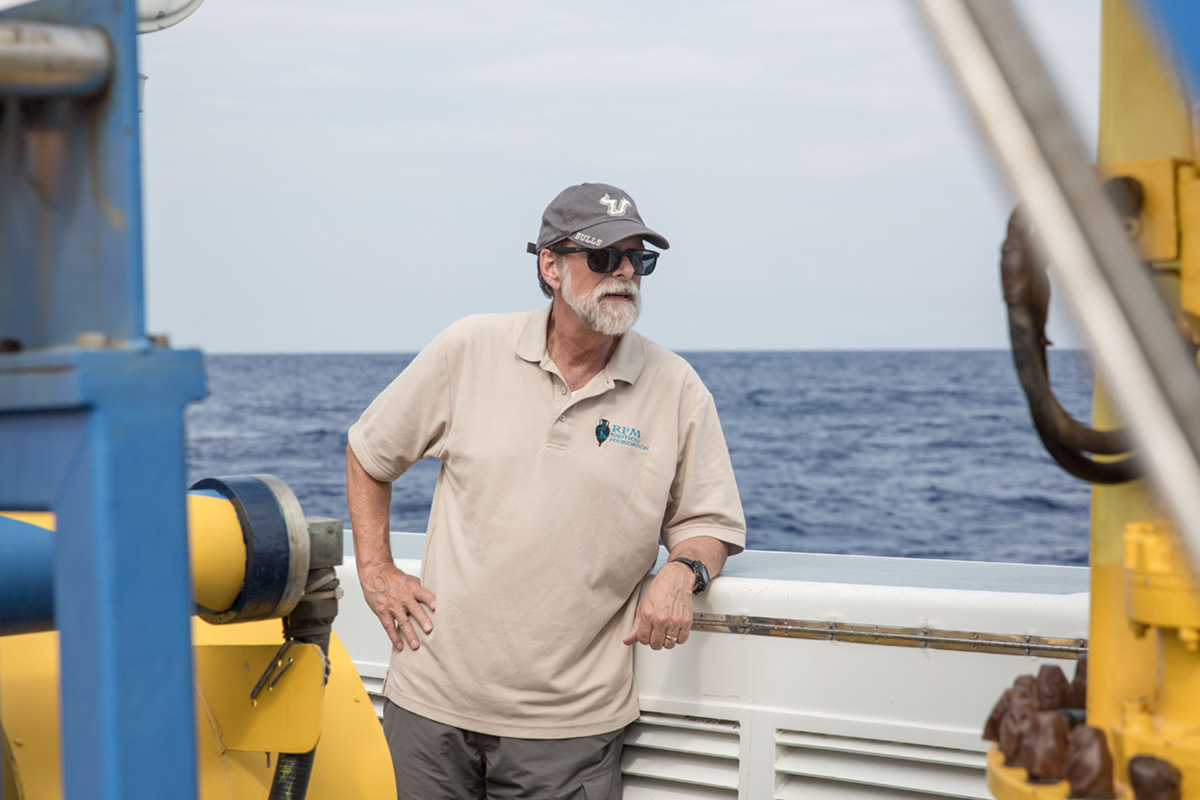
Murray aboard research vessel Hercules. Photo credit: John Beck
William Murray, Stathis Professor of Ancient History at the University of South Florida (USF) and a team of international researchers from the United States and Europe are working with the Sicilian Superintendency of the Sea to explore and map a rare debris field from a famous ancient naval battle between Rome and Carthage.
Fought in the Egadi Islands off western Sicily on 10 March 241 BC, the battle produced a victory for Rome that established the Romans as a major Mediterranean power and paved her way toward Empire.
Discovered in 2005 by RPM Nautical Foundation under the guidance of the late Sebastiano Tusa and the Sicilian Superintendency of the Sea, the site has yielded many interesting treasures. Since no other ancient battle site has ever been found in the Mediterranean Sea, everything that turns up is new and important. Thus far, the team has located a number of bronze rams, heavy metal warheads from the bows of ancient oared warships. Rams are the rarest of naval finds with only seven recovered prior to the Egadi discoveries. By 2019, the team had identified 23 warheads from this battle.
In addition to these rare finds, they have also found scores of bronze helmets, Carthaginian coins and close to 900 clay containers, called amphoras, that held supplies intended for a Carthaginian garrison on Western Sicily. Surprisingly, swords from this period of Roman history are extremely rare and the team, now augmented by divers, is starting to locate these as well.
Each item is carefully mapped by GPS coordinates that allow for the creation of a detailed map of the debris field. Murray, co-Principal Investigator (PI) of the project and its historian, has long tried to hypothesize the surface positions of the warships at the moment they were destroyed, when they released their clay jars, swords, knives, helmets, coins and panicked men into the water.
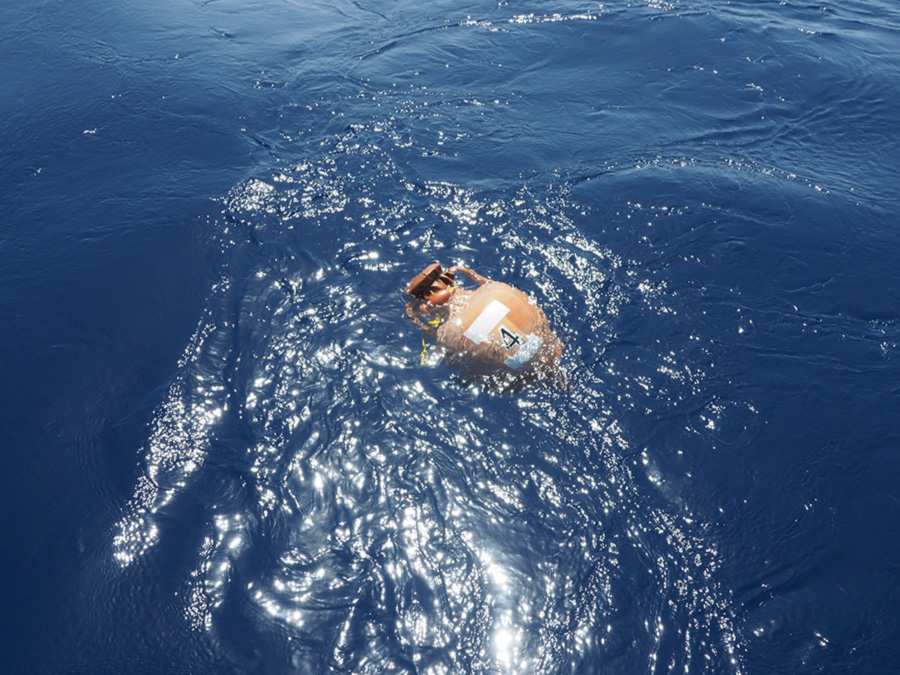
Murray floating grain amphora
Since the battle zone is swept by strong currents, the team needed to know how far the items dropped from the surface might have traveled before they hit the bottom. Armed with a Creative Scholarship Grant from USF’s Research Council, Murray carried out a series of experiments in 2019 to answer some of these questions.
Using six replica storage jars made to order by a local potter and three replica helmets made for ancient war game reenactors, Murray and his team conducted a series of controlled drops in a region of the battle zone where the water is almost 300 feet deep. Unsurprisingly, the helmets and amphoras that were filled with liquids (wine and oil) sank quickly to the bottom, traveling between 16 and 33 meters from their release points. But amphoras filled with wheat, known to be carried by the fleet, floated for up to an hour before sinking and traveling roughly a kilometer down current from where they were released.
When these results were compared with a GIS (geographic information system) map of the debris field, the situation clarified. Suddenly, Murray could see the positions of the warships when the two fleets collided.
It seems now that many ships went to the bottom quickly, just as our best accounts reported the action, but they left behind more than a thousand amphoras that bobbed with the current for up to an hour and produced the spread-out pattern of clay jars we see today.
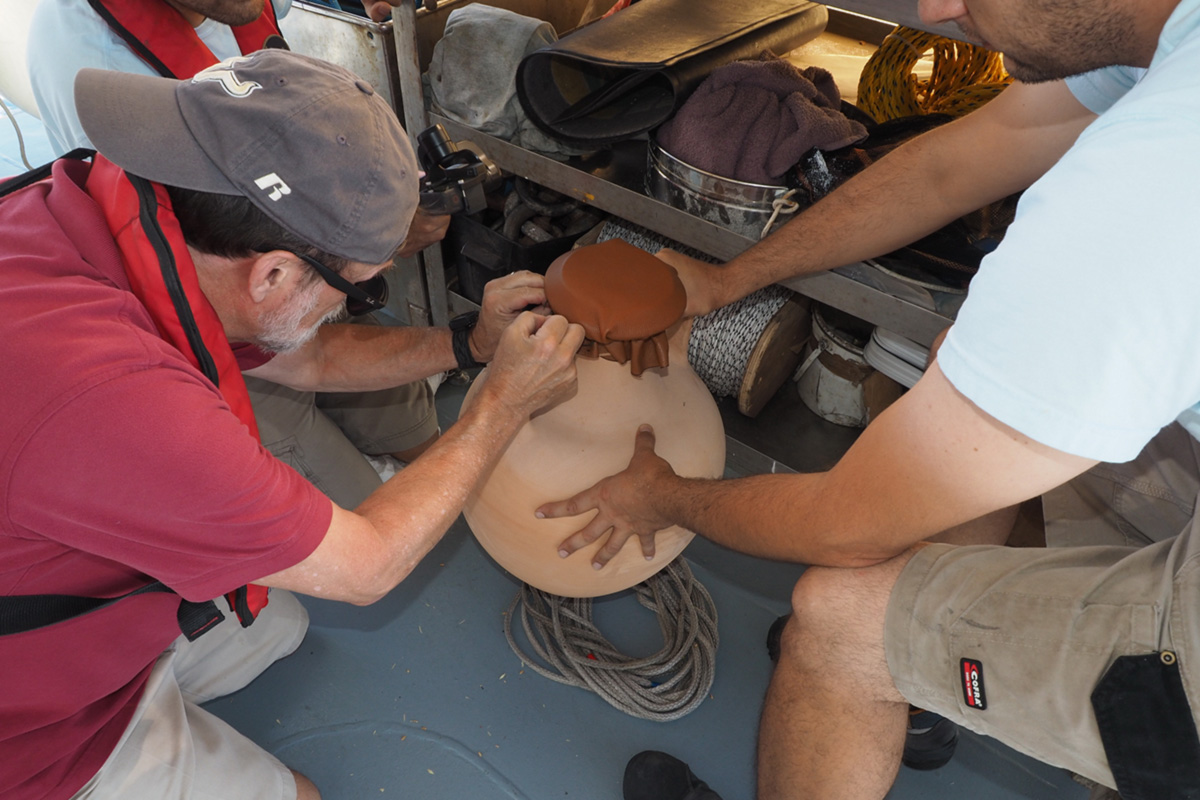
Murray securing amphora cap
On the last few days of the 2019 survey, the team tested their new theory by searching for warship rams in an area to the northeast of a scatter of jars, and to their delight they found four additional rams. Armed with this new understanding of the battle zone, Murray and his fellow researchers can hardly wait until an effective COVID-19 vaccine allows the US-based team to continue their search to define the battle zone with their Sicilian colleagues.
The results of this research are featured in a series of nine lectures streamed to various locations around the country by Murray, as this year's distinguished Martha Sharp Joukowsky Lecturer for the Archaeological Institute of America.
Under the direction of Valeria LiVigni Tusa, the Sicilian Superintendency of the Sea also plans to use the results of the research to promote cultural heritage education, performing outreach to local schools and the general public through lectures, events, and exhibitions.
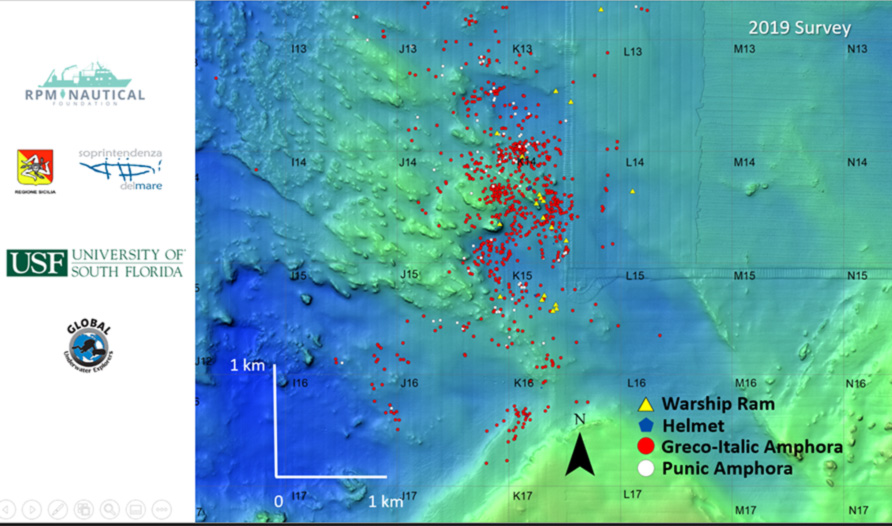
Courtesy of RPM Nautical Foundation
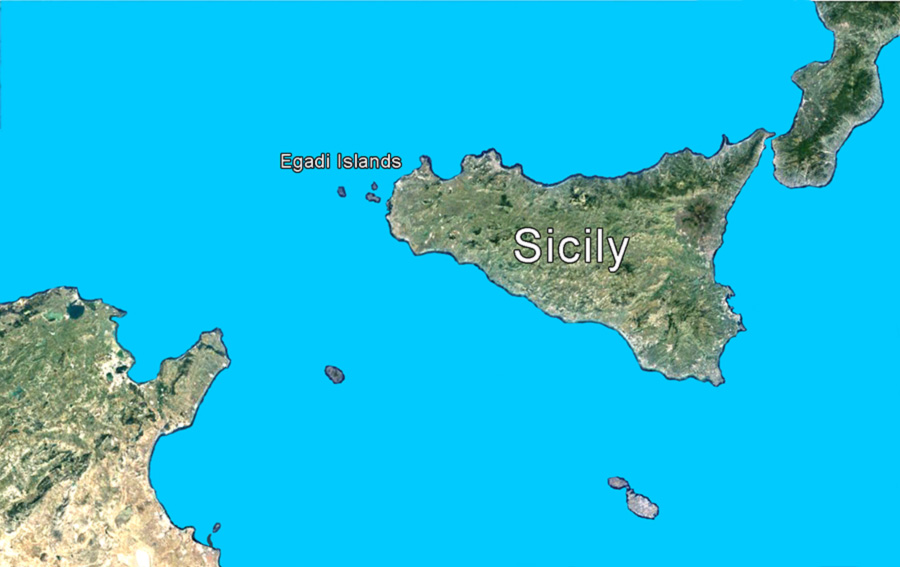
Egadi Islands map
Private support from donors like Michelle Turman helps further advance research and student success in Ancient History
“I felt compelled to create the Turman Study Abroad Scholarship to support research abroad in Ancient Studies because of my personal connection to the work being done and to have an impact on those who are equally passionate about history. As a student who majored in Humanities and Art History, who supported my studies through financial aid, history came alive for me when I was able to study in Italy, Greece, and Paris. I learned what I was truly capable of achieving through independent study and how to nurture relationships with others who have diverse backgrounds. The experiences gained far outweighed the in-class instruction and the investment I had to repay. So, it gives me great pleasure to provide access to an opportunity for students who are equally passionate about a field of study that is underfunded, but yet so vital to a well-rounded education.
The excitement I witness each year when I get to meet my recipient(s) and see their presentation of what they learned, how it will contribute to their goals, and the joy they received from this life-changing experience is humbling.” - Michelle Turman, ‘00

Michelle Turman and Stephen DeCasien
Ms. Turman is the CEO of Catalyst Consulting Services and has over 27 years of nonprofit experience. Her philanthropic support established the Turman Study Abroad Scholarship in Ancient Studies. Ms. Turman is also a member of the College of Arts & Sciences’ Dean’s Advisory Council at USF.
Mr. DeCasien received his MA in History from USF in 2019 and is currently a PhD student in the Nautical Archaeology Program at Texas A&M University. He was also a recipient of the Turman Scholarship and now works with Dr. Murray as a member of the RPM Nautical Foundation team.